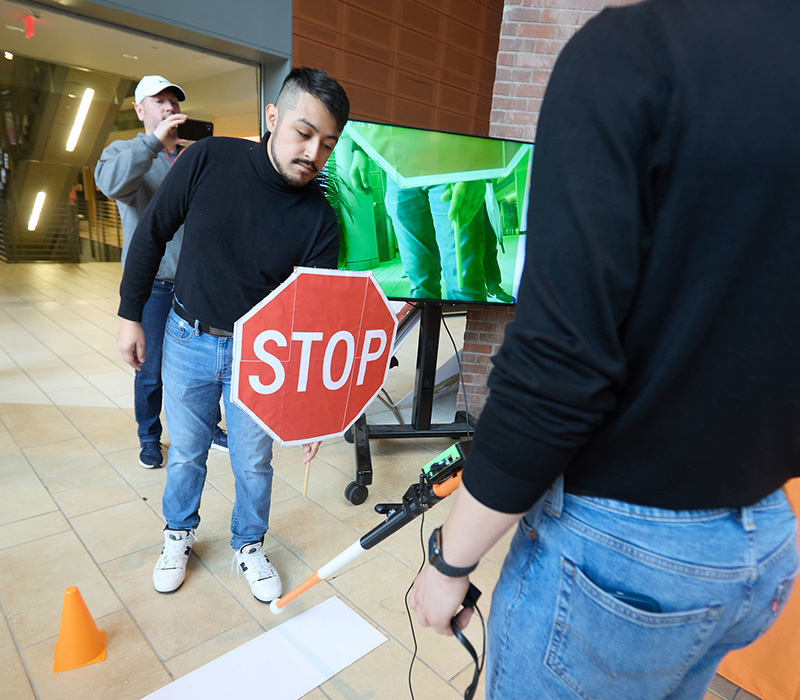
New York City has over 12,000 miles of sidewalks, thousands of buses, and a huge transit system that can get you from one end of the city to the other. It’s perfect for pedestrians – but how accessible is it?
Vision loss affects hundreds of New Yorkers, who may find it difficult to navigate sidewalks, crosswalks, and intersections. However, steps are being taken to address these accessibility issues. Along with recent federal court orders for NYC to install accessible pedestrian signals throughout the city, four electrical and computer engineering students are taking accessibility a step further with their navigational cane, Pear Vision+.
“We knew we wanted to make something that was really practical and useful,” says Armani Isonguyo ‘25. “Traditional canes serve only as a physical extension of the user, providing information of any obstacles within 5 feet proximity. Our cane offers comprehensive navigational aid.”
Created by Isonguyo, Alexander Segarra ‘24, Elliot Salas ‘24, and Isaish Fernandez ‘24, the engineering group’s smart cane can identify obstacles in a person’s way, which direction they’re facing the obstacle, and whether the objects are moving. It also provides feedback through audio descriptions via Bluetooth and vibrations, giving users a better understanding of their surroundings.
“I love video games and Nintendo Switches and PlayStation 5s all incorporate vibration into gameplay,” Salas says. “The original idea was actually to put a PlayStation 5 motor in the cane for vibration, but we used a 5V haptic motor disk instead.”
The smart cane is equipped with NVIDIA’s Jetson platform, which helps it identify objects in the surrounding environment. It also has a depth-sensing camera that can determine distances and create a three-dimensional view of the environment. This assists visually impaired individuals in identifying obstacles in real time and navigating their surroundings safely. The cane was also modeled using Shapr3D, a 3D modeling tool.
“With the design, we didn’t focus too much on the length or thickness of the cane, based on previous inspirations in the real world,” says Segarra. “We focused more on the handle and the angle you would want to hold so it doesn’t break.”
The students presented Pear Vision+ at the College of Engineering and Computer Science’s (ECS) Open House and also won the William Peil Award for the best electrical engineering and computer science senior design project. They see potential for their project to impact the lives of many.
“I saw this project as one that was meaningful in advancing a certain industry and the world. I’m glad to be part of something that can be impactful,” says Segarra.
“This project not only pushed the boundaries of what we can achieve with technology but also taught us the importance of engineering solutions that make a real difference in people’s lives. We are proud to contribute to a more accessible world,” says Isonguyo.
